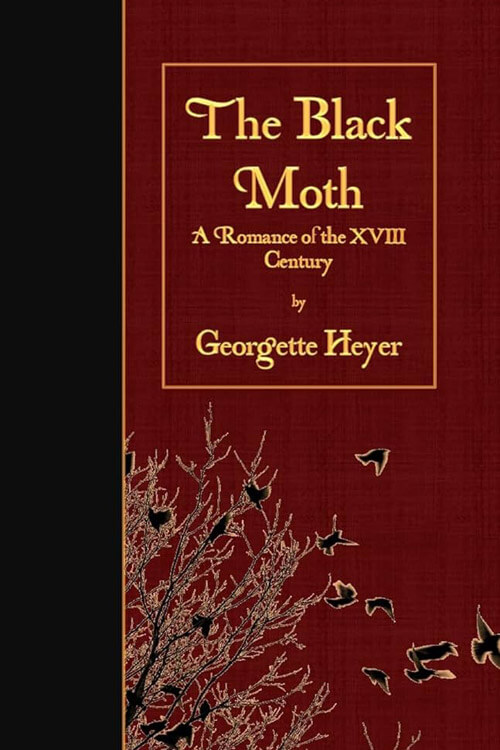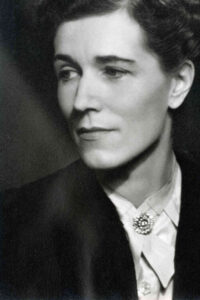
The Black Moth
Mr. Chadber bowed exceedingly low and implored the lawyer not to remain in the draughty coffee room. Sir Anthony would never forgive him, so he allowed his solicitor to await him there. Would he not come to Sir Anthony’s private parlour?
The faintest smiles creased the lawyer’s thin face as he walked along the passage in Mr. Chadber’s wake.
He was ushered into a low-ceilinged, pleasant chamber looking out onto the quiet street and left alone until Mr. Chadber went in search of Sir Anthony.
The room was panelled and ceilinged in oak, with blue curtains to the windows and blue cushions on the high-backed settle by the fire. A table stood in the centre of the floor, with a white tablecloth and places laid for two. Another smaller table stood by the fireplace, with a chair and a stool.
The lawyer took silent stock of his surroundings and reflected grimly on the landlord’s sudden change of front. It would appear that Sir Anthony was a gentleman of some standing at the Chequers.
Yet the little man was unhappy and fell to pacing to and fro, his chin sunk low on his breast and his hands clasped behind his back. He had come to seek the disgraced son of an Earl, and he was afraid of what he might find.
Six years ago, Lord John Carstairs, eldest son of the Earl of Wyncham, had gone with his brother, the Hon. Richard, to a card party and had returned a dishonoured man.
That Jack Carstairs should cheat was incredible and ridiculous, and at first, no one believed the tale that so quickly spread. But he had confirmed that tale himself, defiantly and without shame, before riding off, bound, men said, for France and the foreign parts. Brother Richard, so said the countryside, was left to marry the lady they were both in love with. Nothing further had been heard of Lord John, and the outraged Earl forbade his name to be mentioned at Wyncham, swearing to disinherit the prodigal. Richard espoused the fair Lady Lavinia and brought her to live at the great house, strangely forlorn now without Lord John’s magnetic presence; but, far from being a satisfied bridegroom, he seemed to have brought gloom with him from the honeymoon, so silent and so unhappy was he.
Read or download Book
Georgette Heyer
Georgette Heyer (16 August 1902 – 4 July 1974) was an English novelist and short-story writer in the Regency romance and detective fiction.
Biography.
Her writing career began in 1921 when she turned a story conceived for her ailing younger brother into the novel The Black Moth. In 1925, Heyer married George Ronald Rougier, a mining engineer. The couple lived in Tanganyika Territory and Macedonia for several years before returning to England in 1929. After her novel These Old Shades became popular despite its release during the General Strike, Heyer determined that publicity was unnecessary for good sales. She refused to grant interviews for the rest of her life, telling a friend: “My private life concerns no one but myself and my family.”
Heyer essentially established the historical romance genre and its subgenre, Regency romance. Jane Austen inspired her Regencies. To ensure accuracy, Heyer collected reference works and detailed notes on all aspects of Regency life. Whilst some critics thought the novels were too detailed, others considered the level of detail to be Heyer’s greatest asset. Her meticulous nature was also evident in her historical novels; Heyer even recreated William the Conqueror’s crossing into England for her book The Conqueror.
Beginning in 1932, Heyer released one romance novel and thriller each year. (See List of works by Georgette Heyer.) Her husband often provided basic outlines for the plots of her thrillers, leaving Heyer to develop character relationships and dialogue to bring the story to life. Although many critics describe Heyer’s detective novels as unoriginal, others, such as Nancy Wingate, praise them “for their wit and comedy as well as for their well-woven plots”.
Problems with tax inspectors and alleged plagiarists sometimes clouded her success. Heyer chose not to file lawsuits against the suspected literary thieves but tried multiple ways of minimizing her tax liability. Forced to put aside the works she called her “magnum opus” (a trilogy covering the House of Lancaster) to write more commercially successful works, Heyer eventually created a limited liability company to administer the rights to her novels. She was accused several times of providing an overly large salary for herself, and in 1966, she sold the company and the rights to seventeen of her novels to Booker-McConnell. Heyer continued writing until her death in July 1974. At that time, 48 of her novels were still in print; her last book, My Lord John, was published posthumously.






